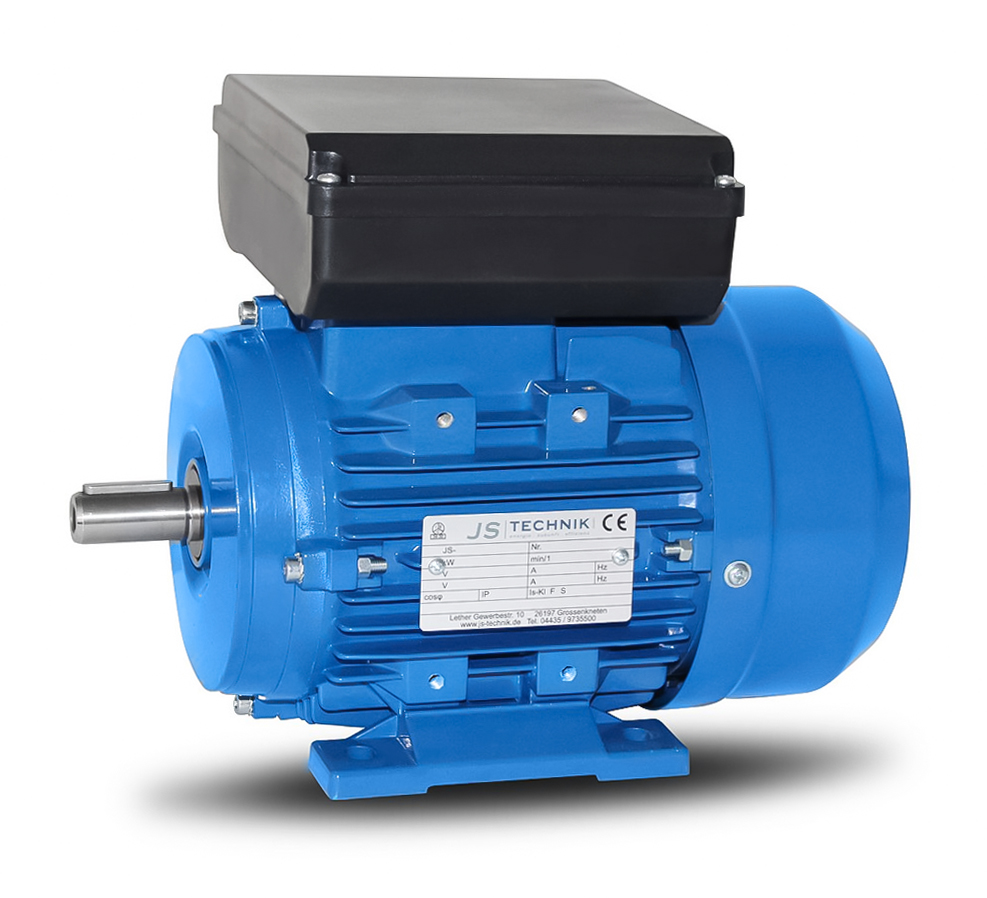3. Why do single phase motors have two capacitors?
It is then a running capacitor and a starting capacitor.
About the AC motor function
Since the at least two phase-shifted voltages required to generate a rotating field are not available with single-phase alternating current, a so-called auxiliary phase must be generated. One of the two stator windings is supplied directly from the AC network, while a capacitor is connected in series to supply the second winding, which is arranged at 90 degrees. This causes the phase shift of the voltage on the second winding. Although the rotating field generated in this way is sufficient to move the rotor, it is also load-dependent and leads to a low starting torque. That's why capacitor motors should start up to the rated working speed without load if possible. The starting torque can be noticeably improved if another so-called starting capacitor, approximately 2-3 times larger, is briefly connected in parallel to the existing one during the start-up period. The higher starting current requirement must then be taken into account, which can be several times the operating current at the rated speed. Strictly speaking, the size of the capacitor can only be optimized for a single load case. With optimal capacitor dimensioning, around 65% of the mechanical power can be achieved compared to an asynchronous motor of approximately the same design with a three-phase power supply. High-quality capacitors are usually used for the phase shifter or starting capacitor. Typical capacitance values are approximately 20 µF per kW of motor power. During heavy starting, the capacitance value can be up to approx. 50 µF/kW.

